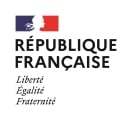Goal: maintain risk management quality standards and minimise incidents.
The internal audit and risk management system must comply with market standards with regard to negotiable debt, cash, derivatives and trades on behalf of third parties. The system should spot problems and incidents that could disrupt debt and cash transactions as early as possible, mitigate them and assess their impact. The system's scope is also determined by the diversity of AFT’s transactions, the payment circuits used and the international nature of its counterparties.
In the draft Budget Act and performance indicators submitted to Parliament, AFT states its goal as “achieving a constant quality of risk management that minimises incidents”.
Several sets of indicators have been developed to assess whether or not this goal is achieved.
Quality indicators relating to AFT’s audit system
- The first indicator lists the number of incidents or breaches of AFT’s internal rules under its general activity framework (risk limits, authorisations or internal controls breached).
- Five other quality indicators are assessed by an external auditor (KPMG for 2022) based on verifying that AFT’s procedures are consistent with its activitiesand related risks. The Order of 3 November 2014 on internal control in the banking sector has been the benchmark for the rules governing AFT since 2015.
Indicators tracking debt and cash transaction execution incidents
- First such indicator: the number of incidents that have an adverse impact on the Banque de France account balance.
- Second such indicator: the number of incidents that have a zero or a positive impact on the account balance.
- Third such indicator: the number of incidents with no impact on the account balance that relate to the information systems used to manage transactions, compliance incidents, or other types of incidents such as non-compliance with internal operating procedures.

